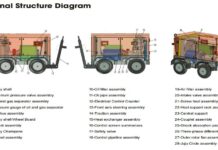The construction industry happens to be a significant contributor to worldwide carbon emissions for a long time. But it is important to note that this challenge extends beyond just new buildings.
Throughout the past 10 years, there have been major, tangible changes in the standards for Grade A buildings. As a result, numerous buildings that were once considered to be top-tier are now seen as less sustainable.
It is well to be noted that fashionable glossy glass facades may have been impressive in the years that have gone by, but they fall short when it comes to energy efficiency, utilization of materials, tracking data, control of the user, as well as biophilic design. These all happen to be significant aspects of modern, high-end office buildings.
For buildings to stay current and, at the same time, remain competitive in today’s market, it is important for asset owners as well as developers to prioritize sustainable and forward-thinking design. They should look to create spaces that not only have impressive visibility but also go on to function with the utmost efficiency and also offer maximum comfort.
Certain modern buildings that are considered top-notch when it comes to technology and design may not happen to sync with the goals of occupants or building owners in the next 10 to 20 years. This will go on to have an impact on investors too.
Glass facades that are found in buildings can lead to energy inefficiency because they have a weak thermal envelope, which often allows excessive heat to enter the building in the summer and escape during the winter.
Ultimately, this necessitates mechanical correction, which involves heating and cooling, which again leads to a rise in carbon emissions. Apart from this, the materials utilized in constructing these facades, like aluminum and steel, go on to contribute significantly when it comes to their carbon footprint.
Apart from this, the brick facades go on to give out numerous advantages. Not only do they help as excellent insulators, but at the same time, they emit a lesser embodied carbon footprint compared to other building materials like steel and concrete. This is due to the fact that they happen to be natural materials that go on to require less manufacturing and processing throughout their creation.
Besides, brick is known for its exceptional durability, thereby allowing it to endure for significantly extended periods without requiring any kind of replacement. This longevity significantly helps to decrease its overall carbon footprint across its lifespan.
The building, known as Fuse, features façades that happen to be specifically designed to decrease solar heat gain and also minimize operational energy usage. This is achieved by way of using setbacks to the glazing elements. By ensuring to incorporate a well-designed façade that effectively lessens the solar gain, the mechanical and electrical- M&E systems can operate with less workload, thereby resulting in improved energy efficiency.
So as to effectively reduce carbon emissions across the supply chain, it is crucial to prioritize the usage of recycled or repurposed materials, which not only helps minimize waste but at the same time reduces the demand for fresh materials. In addition, incorporating elements such as vintage tiles or reclaimed wood can go on to elevate the character and uniqueness of a building, setting it apart from typical, mass-produced creations.
One effective method when it comes to constructing buildings that are sustainable and adaptable to future needs is by having elements of nature within the design. This can go on to help minimize energy usage by ensuring to maximize natural ventilation and lighting, and hence reducing dependence on artificial systems. Green walls as well as pocket parks, in addition to green spaces within buildings, offer various benefits, such as possible options when it comes to recreation, relaxation, and also a connect with nature. Additionally, they contribute to bringing up the overall well-being.
But although the significance when it comes retaining as much carbon as possible during refurbishment is pretty evident, the actual situation happens to be more complex. The challenge is to make sure of a delicate equilibrium between reusing an existing structure and acknowledging when it may not be feasible.
The act of reusing an existing structure helps with the purpose of preserving embodied carbon and minimizing waste. However, it is indeed significant to note that older materials or systems may lack the energy robustness, efficiency, as well as safety features that are found in more modern choices. When undertaking refurbishment, it is critical to prioritize sustainability while at the same time ensuring the building remains safe, operational, and at ease.





























